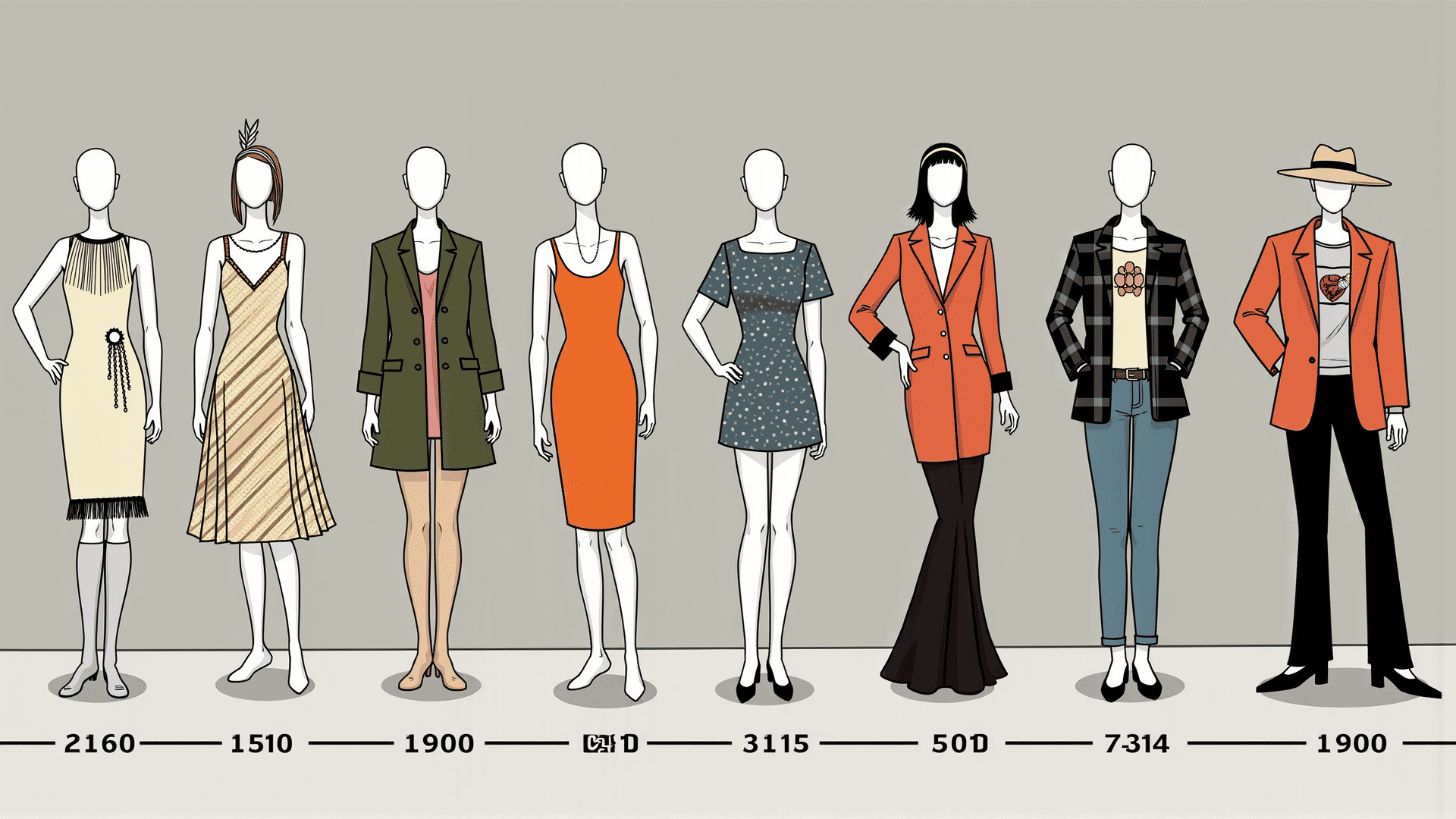Fashion, a powerful form of self-expression, has continually evolved through the decades, reflecting societal changes, cultural shifts, and technological advancements. From the daring styles of the 1920s to the bold silhouettes of the 1980s, fashion has always been on the cutting edge of cultural movements.
The 1920s marked a major shift in fashion as it embraced the spirit of freedom and rebellion. Women adopted shorter hemlines, and loose-fitting garments became the norm, epitomized by the simple yet elegant flapper dress. This era celebrated liberation with dropped waists and the use of luxurious fabrics like silk and velvet.
Moving into the 1930s and 1940s, fashion was influenced by the global economic downturn and wartime. Despite these challenges, the decade strived for glamour within the constraints of rationed materials. Tailored suits and flowing evening gowns became popular, along with the introduction of synthetic fibers, which offered new possibilities for clothing design.
The post-war 1950s saw a return to opulence and femininity. Full skirts, hourglass figures, and pastel colors dominated, reflecting an era eager for prosperity. This was a time when fashion emphasized structure, with garments showcasing intricate craftsmanship and a nod to traditional style.
The 1960s brought revolutionary change, driven by youth culture and a desire for individuality. Miniskirts, bold patterns, and vibrant colors embodied the experimentation and freedom of the era. Icons like Audrey Hepburn and Twiggy became synonymous with the new, progressive look, pushing boundaries and sparking global trends.
In the 1970s, fashion embraced diversity and self-expression more than ever before. The styles ranged widely, from the bohemian and hippie influences marked by flowing fabrics and earth tones, to the glitzy disco scene with metallic fabrics and platform shoes. This decade was all about breaking the mold and celebrating personal style.
The 1980s stood out for its boldness and power. Power suits became a staple for both genders, symbolizing strength and confidence in the workplace. Big shoulders, bright colors, and oversized accessories highlighted a period unafraid of making audacious statements.
As the 1990s rolled in, minimalism took center stage. Fashion pared back, influenced by a grunge aesthetic with subdued colors and a casual, effortless look. This decade also saw the rise of technological advancements that began reshaping how trends were shared and adopted globally.
Entering the 21st century, fashion became more globalized, with digital media exerting a significant impact. Style became a fusion of past influences with modern innovations, emphasizing sustainability and inclusivity. Now, fashion continues to reinvent itself, drawing inspiration from its rich history while looking forward to what the future holds.
Throughout these decades, fashion has not only mirrored societal shifts but also helped shape them, providing a canvas for creativity, identity, and transformation.
